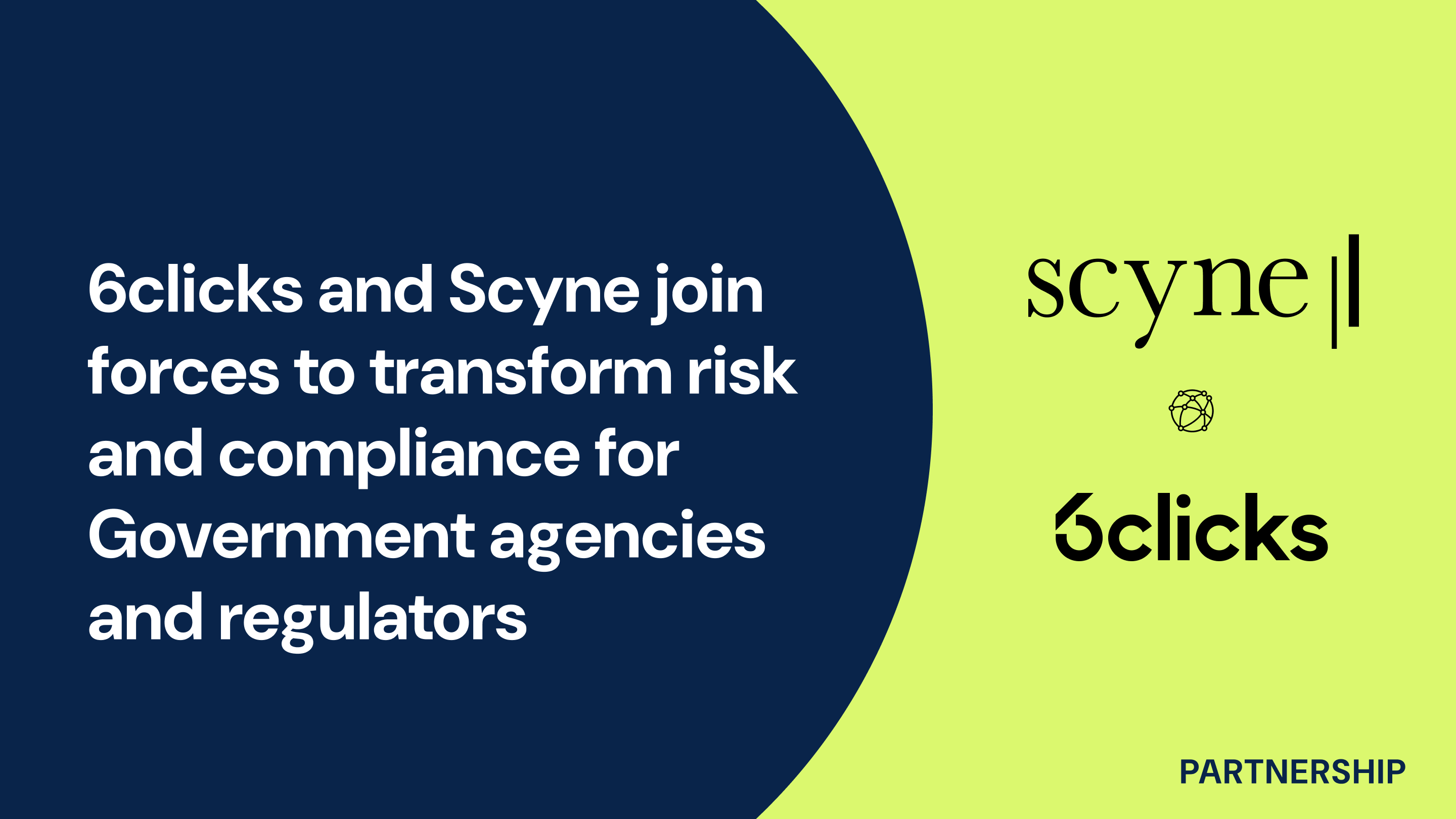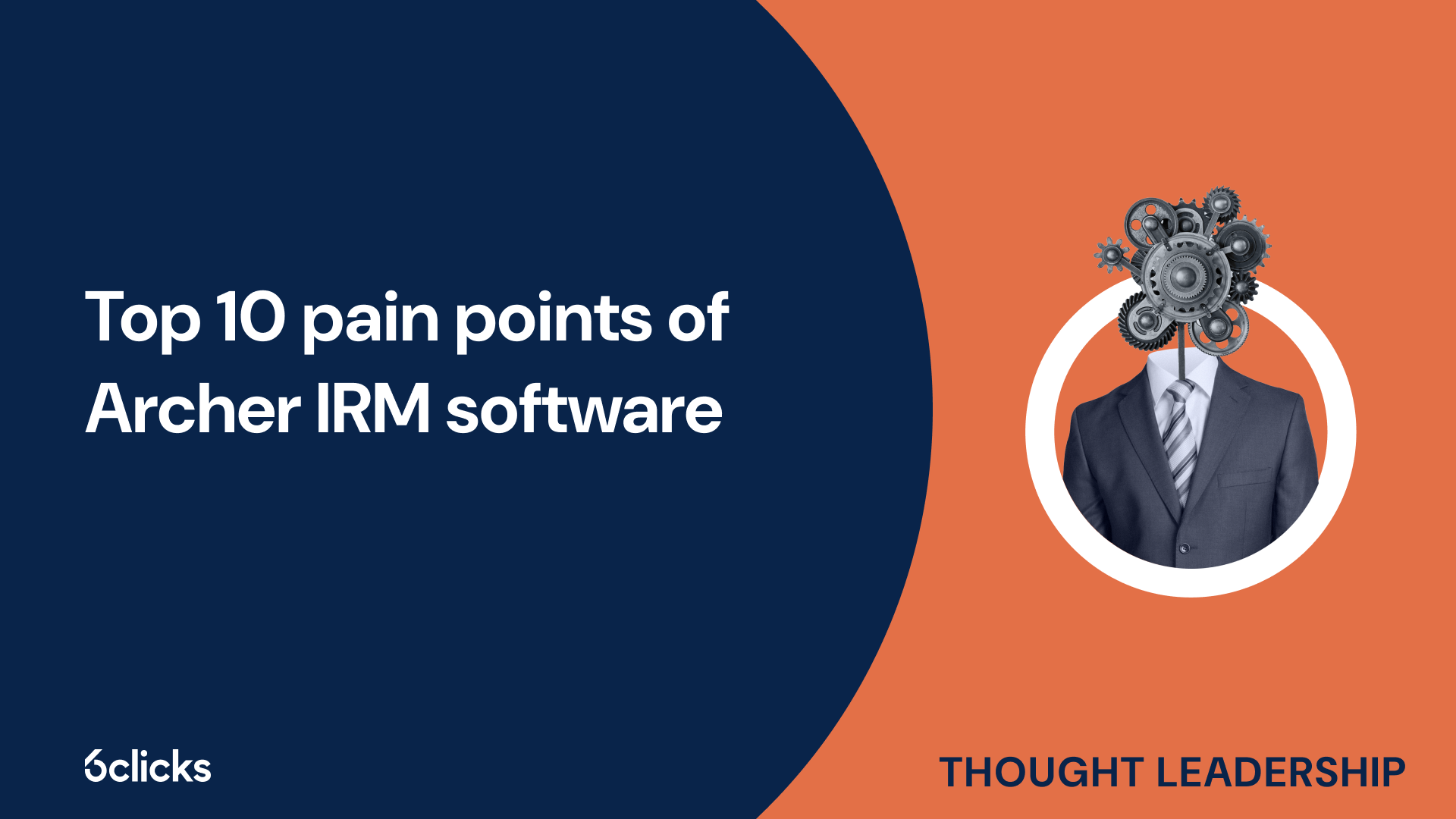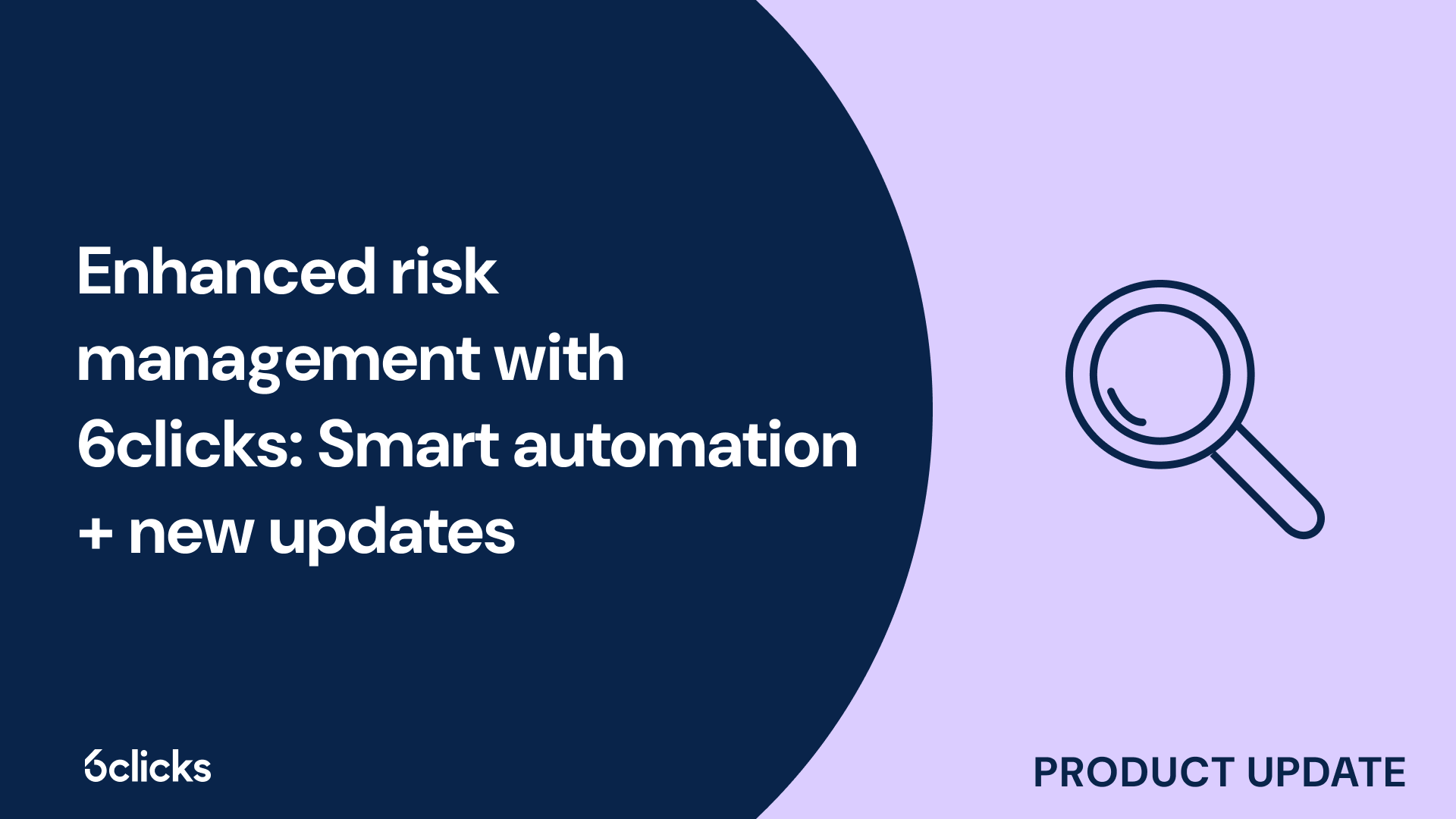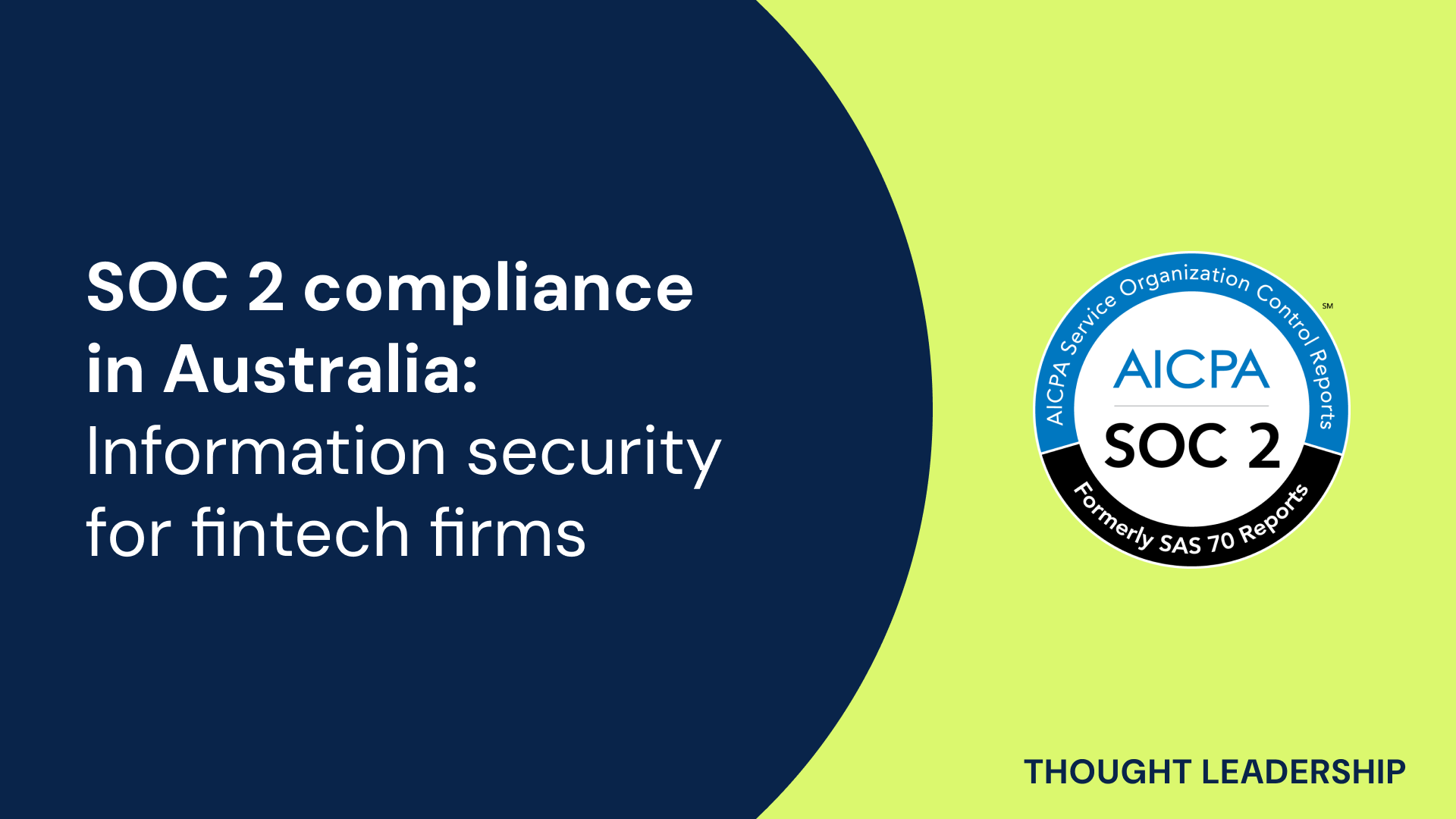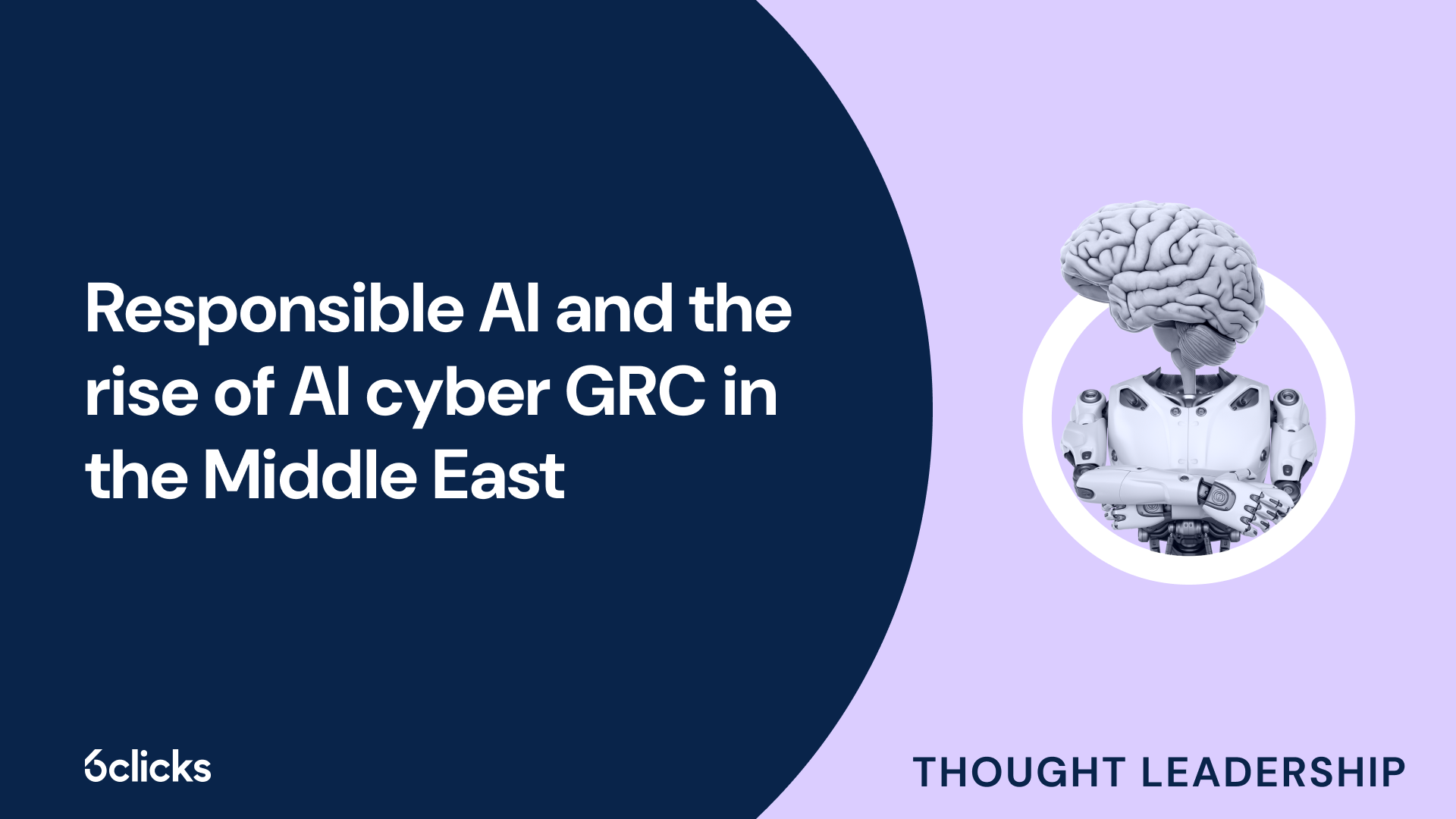The GRC buyer’s guide for 2025: Building resilience with AI-powered, federated solutions
Discover the ultimate GRC buyer's guide for 2025! Uncover how AI-powered, federated solutions transform compliance and security management for industries like government, aerospace, banking, and more. Learn about centralized control, continuous compliance, and advanced cyber GRC capabilities. Download now!
-1.png?width=200&height=249&name=Group%20193%20(1)-1.png)
The GRC buyer’s guide for 2025: Building resilience with AI-powered, federated solutions
What is GRC software?
GRC software, also known as Governance, Risk, and Compliance software, is a comprehensive solution designed to aid organizations in effectively managing their internal processes, compliance requirements, and risk exposure. It allows businesses to streamline their operations, improve decision-making, and drive better business performance. By providing a structured approach, GRC software helps compliance teams align organizational goals with business activities, ensuring that all business processes are carried out in accordance with industry standards and regulations. This integrated approach enables businesses to identify potential risks, evaluate their impact, and implement preventive and detective controls to mitigate them. With GRC software, businesses can also enhance communication and sharing between departments, eliminating communication breakdowns and creating a single platform for effective collaboration. Ultimately, GRC software empowers organizations to achieve their strategic objectives, enhance business growth, reduce costs, and effectively manage security risks and compliance programs.
Benefits of GRC software
GRC software offers numerous benefits to organizations. Firstly, it improves operational efficiency by providing a centralized platform for managing various aspects of governance, risk, and compliance activities. This software streamlines business processes, enabling organizations to effectively meet compliance requirements and align their activities with business goals.
Additionally, GRC software provides higher quality information for better decision-making. It offers a structured approach to gathering, analyzing, and reporting data related to risks, controls, and compliance programs. This enables senior management to make informed and productive decisions that drive business growth and support organizational goals.
Another significant benefit of GRC software is reduced costs. By implementing effective GRC activities, organizations can identify and mitigate potential risks, thus avoiding costly incidents and non-compliance penalties. This software facilitates continuous monitoring of controls, helping businesses to proactively manage risks and reduce the likelihood of financial, operational, and security risks.
Furthermore, GRC software enhances communication and collaboration between departments and business units. It provides a single platform for sharing information, policies, and best practices among different stakeholders. This integration and sharing of data promote a cohesive and coordinated approach towards compliance functions, ensuring consistent adherence to industry standards and minimizing the risk of communication breakdowns.
Compliance management
Compliance management is a critical function for businesses, ensuring adherence to laws, regulations, and industry standards. With businesses facing increasingly complex compliance requirements, the use of compliance management software has become essential. This software helps organizations streamline their compliance processes, automate tasks, and maintain transparency and accountability. By centralizing compliance activities, businesses can effectively manage risks, monitor adherence to policies, and identify and address any compliance gaps. Compliance management software also enables businesses to track and report on compliance activities, making it easier to demonstrate compliance to auditors, regulators, and stakeholders. Additionally, compliance management software helps reduce the costs associated with compliance by preventing non-compliance penalties and identifying potential risks. Overall, this software plays a crucial role in helping businesses stay compliant, mitigate risks, and maintain a strong reputation.
Streamlined compliance processes
GRC software brings numerous benefits to organizations by streamlining compliance processes, thereby enabling effective risk management and improved decision-making. One of the key advantages of GRC software is the automation of manual activities, allowing for efficient execution of compliance tasks. This automation helps reduce human error and ensures that processes are consistently followed.Additionally, GRC solutions enable the development of repeatable workflows, ensuring that compliance procedures are standardized and can be easily replicated across different business units and locations. This streamlines the compliance processes by eliminating inconsistencies and providing clear guidelines for employees.
Centralization of data and documentation is another critical aspect of GRC software. By storing all relevant information in a single platform, organizations can effectively manage and track compliance requirements. This centralization enables faster access to data, promotes collaboration, and reduces the risk of communication breakdown between different departments and teams.
GRC software also allows organizations to track regulatory frameworks and industry standards. By constantly monitoring changes in regulations, GRC solutions can identify control gaps and provide guidance on filling them. This proactive approach helps organizations adapt to evolving compliance requirements, reducing potential risks and ensuring compliance with laws and regulations.
Automation of compliance tasks
GRC software plays a crucial role in automating compliance tasks and streamlining the process of ensuring that business activities adhere to regulations. By leveraging GRC tools like ServiceNow's GRC suite, organizations can greatly simplify their compliance procedures.
One key benefit of GRC software is the ability to consolidate rules and regulations into a single platform. This allows organizations to easily map control objectives to their company policies, ensuring that their controls align with the necessary regulations. GRC software also enables the assignment of applicable controls to specific tasks or processes, ensuring that compliance requirements are met consistently across the organization.
Another important feature of GRC software is the ability to quickly assess control operations. With GRC tools, organizations can easily identify control gaps and take proactive measures to resolve them. The software centralizes the collection of evidence, making it easier for organizations to gather the necessary documentation and close any compliance gaps efficiently.
Easier to track compliance requirements
GRC software offers several benefits that make it easier for organizations to track compliance requirements effectively. Here are three key ways in which GRC software simplifies the compliance tracking process:
Firstly, GRC software facilitates the consolidation of rules and regulations into a central repository. This centralized approach allows organizations to easily access and review all relevant compliance requirements in one place. With all the necessary information readily available, compliance reporting becomes much simpler and more efficient.
Secondly, GRC tools enable the mapping of control objectives to company policies and procedures. This functionality ensures that all employees are aware of the required controls and understand how they relate to the organization's policies. This alignment between control objectives and company policies helps to ensure consistency in compliance efforts and reduces the risk of non-compliance.
Lastly, GRC platforms provide the capability to monitor policy compliance and track employee acknowledgment of policy changes. These tools allow organizations to keep track of policy adherence, ensuring that employees are following the established guidelines. Additionally, GRC software offers a mechanism for monitoring and auditing policy acknowledgment to ensure that employees are aware of any policy updates or changes.
By streamlining the consolidation of rules and regulations, mapping control objectives to company policies, and facilitating policy compliance monitoring, GRC software greatly simplifies the process of tracking compliance requirements. Implementing a GRC software solution can help organizations ensure adherence to regulatory standards while minimizing the risk of non-compliance.
Improved efficiency and productivity
GRC software plays a crucial role in improving efficiency and productivity within organizations by streamlining processes, automating tasks, and reducing costs. By leveraging GRC software, businesses can minimize the time and effort spent on manual tasks, allowing employees to focus on more strategic activities.
One of the key benefits of GRC software is its ability to automate workflow management. This automation ensures that tasks and responsibilities are assigned to the right individuals, promoting a more streamlined and efficient process. Additionally, GRC software automates control assessments, eliminating the need for manual reviews and audits. This not only saves time but also reduces the risk of human error.
Another advantage of GRC software is the automation of notifications and reminders. This feature ensures that employees are alerted of pending tasks, deadlines, and policy changes, enabling them to take immediate action. Such automation minimizes delays and speeds up decision-making processes.
Moreover, GRC software saves time and reduces human error by providing instant access to necessary information. Instead of manually searching through piles of documents or spreadsheets, employees can quickly retrieve the information they need from a centralized repository. This improves collaboration and eliminates communication breakdowns.
Risk management
Risk management is a critical component of any organization's operations. It involves identifying, assessing, and mitigating potential risks that could impact the achievement of business objectives. Effective risk management allows businesses to make informed decisions, improve business performance, and ensure compliance with relevant regulations and standards. However, managing risks manually can be time-consuming and prone to errors. This is where the benefits of GRC software come into play. GRC software provides businesses with a structured approach to risk management, offering a centralized platform to manage and monitor risks, controls, and compliance requirements. With GRC software, businesses can enhance their risk management processes, reduce costs, and make proactive and informed decisions to mitigate risks and protect their assets. Additionally, GRC software enables businesses to streamline risk assessments, automate control testing, and create data-driven action plans to effectively manage and mitigate potential risks. By leveraging GRC software, businesses can strengthen their risk management practices and ensure the overall success and resilience of their operations.
Improved risk identification & assessment
GRC software plays a crucial role in improving risk identification and assessment for businesses. By providing a structured approach to risk management, GRC software helps organizations effectively identify and mitigate potential risks in their operations.
One of the key functionalities of GRC systems is their ability to identify and predict risks. Through advanced analytics and data-driven insights, GRC software helps businesses anticipate potential threats and vulnerabilities. By doing so, businesses can take proactive measures to minimize losses and ensure business continuity.
Risk assessment is an integral part of the risk management process. GRC software enables organizations to systematically assess risks by identifying security loopholes and evaluating their potential impact on the business. This not only helps businesses comply with industry standards and regulatory requirements but also protects them from potential security breaches.
The importance of risk assessment cannot be understated, especially in today's digital landscape where cyber threats are constantly evolving. GRC software enables organizations to identify and address vulnerabilities, implement appropriate fixes, and make informed decisions to safeguard their data and assets.
Enhanced decision making processes
GRC software plays a significant role in enhancing decision-making processes by providing organizations with a data-driven approach to risk and compliance management. With the complex and ever-evolving business landscape, businesses need robust tools to navigate through risks and make informed decisions that align with their strategic objectives.
One of the key advantages of GRC software is its ability to integrate data from various sources, enabling risk and compliance teams to analyze and share information effectively. This integration breaks down data silos and promotes collaboration between departments, leading to more comprehensive insights and a holistic view of the organization's risk landscape. By having a centralized repository of data, decision makers can access real-time information on compliance and risk metrics, resulting in more informed strategic decisions.
The utilization of GRC software for decision making offers several benefits. Firstly, it provides improved visibility into the organization's risk landscape by consolidating data from different business processes and compliance requirements. This holistic view enables decision makers to identify potential risks and assess their impact on the organization's goals.
Additionally, GRC software facilitates faster and better decision making by enabling data-driven decisions. With access to real-time data on compliance and risk metrics, decision makers can quickly assess the effectiveness of existing controls and identify areas that require attention. This allows organizations to respond promptly, mitigate risks, and make productive decisions aligned with their business objectives.
Reduced risk exposure & losses
GRC software plays a crucial role in reducing risk exposure and minimizing losses for businesses. By integrating and analyzing data from various sources, GRC systems provide organizations with a comprehensive view of their risk landscape, enabling them to measure, track, and prioritize actions to mitigate potential risks.
With GRC software, businesses can effectively measure and assess their risk exposure. By consolidating data from different business processes and compliance requirements, organizations gain a holistic understanding of the risks they face. This allows decision makers to identify and quantify potential risks, better understand their potential impact on the business, and take proactive measures to minimize their exposure.
Furthermore, GRC systems enable organizations to track risks over time. By continuously monitoring and updating risk metrics, businesses can stay informed about the changing risk landscape and adapt their risk management strategies accordingly. This proactive approach helps businesses identify emerging risks and take timely actions to prevent or mitigate them, reducing the possibility of losses.
The ability to prioritize actions is another significant benefit of GRC software. By assessing the potential impact and likelihood of various risks, businesses can prioritize their risk mitigation efforts and allocate resources more effectively. This ensures that the most critical risks are addressed first, reducing the overall risk exposure and minimizing potential losses.
Improved regulatory monitoring & reporting
GRC software plays a vital role in improving regulatory monitoring and reporting for organizations. By integrating various compliance requirements into a single platform, businesses can streamline their monitoring and reporting processes, ensuring they meet all regulatory obligations and avoid potential penalties.
One of the key benefits of GRC software is its ability to help organizations stay updated with new regulations and implement them into their policies. With the ever-changing regulatory landscape, businesses face the challenge of keeping track of new regulations and ensuring compliance. GRC software automates the process of monitoring new regulations and facilitates their integration into existing policies. This ensures that organizations are aware of any changes in regulatory requirements and can quickly update their policies accordingly.
Moreover, GRC software enables the tracking and recording of employee acknowledgment of policy changes. This is crucial to ensure that employees are aware of and understand the updated policies. The software provides a digital platform for employees to review and acknowledge policy changes, creating a clear audit trail for compliance purposes. This helps organizations demonstrate their commitment to compliance and reduces the risk of communication breakdown regarding policy updates.
Cost savings and increased ROI
Cost savings and increased return on investment (ROI) are two significant benefits of implementing GRC software in organizations. By streamlining and automating compliance processes, GRC software eliminates the need for manual and time-consuming tasks, reducing operational costs. It enables businesses to efficiently manage their compliance programs and risk programs, minimizing the potential for fines, penalties, and legal liabilities. With GRC software, organizations can identify and address compliance gaps, allowing them to proactively address risks and avoid costly incidents. Additionally, the software provides a structured approach to data management and reporting, facilitating data-driven action plans and productive decision-making. By leveraging the capabilities of GRC software, businesses can optimize their resources, mitigate compliance risks, and achieve cost savings, ultimately leading to increased ROI.
Reduced operating costs
GRC software, which stands for Governance, Risk, and Compliance software, offers numerous benefits for organizations, including reduced operating costs. By automating compliance tasks and streamlining processes, GRC software can help organizations save money in various ways.
Firstly, GRC software eliminates the need for manual and repetitive tasks related to compliance requirements, such as data entry, document management, and report generation. This automation allows employees to focus on more value-added activities, reducing the need for additional staff and lowering labor costs.
Moreover, GRC software helps organizations avoid non-compliance fines by ensuring they adhere to regulatory standards. By automatically monitoring and alerting key stakeholders of any compliance gaps, the software enables timely corrective actions, mitigating the risks of penalties and costly legal consequences.
Additionally, GRC software offers unlimited self-audits, allowing organizations to continuously assess their compliance posture. By identifying and addressing gaps and potential risks in real-time, organizations can avoid costly external audits and related expenses.
By adopting GRC software, organizations can optimize their business processes, enhance productivity, and reduce overall operating costs. The automation of tasks, streamlined processes, staff reduction, avoidance of non-compliance fines, and the ability to perform unlimited self-audits are just a few examples of how GRC software contributes to cost savings.
Increased return on investment (ROI)
GRC software can significantly contribute to increased return on investment (ROI) by improving various aspects of an organization's operations. Firstly, it enhances business processes by automating manual and repetitive compliance tasks. This streamlines workflows, reduces inefficiencies, and increases overall productivity. As a result, organizations can achieve cost savings through reduced operating costs and improved resource allocation.
Moreover, GRC software facilitates enhanced decision-making processes by providing real-time visibility into compliance and risk data. This enables senior management and the compliance team to make more informed and strategic decisions aligned with the organization's goals. With a structured approach to risk and compliance management, organizations can minimize potential risks, avoid costly penalties, and protect their reputation.
Additionally, GRC software improves regulatory monitoring and reporting capabilities. It offers comprehensive tracking and reporting functionalities, ensuring compliance with industry standards and regulations. This not only helps organizations avoid compliance breaches but also enables them to demonstrate integrity and transparency to stakeholders, including board members and regulators.
By addressing these crucial areas, GRC software helps organizations achieve their objectives, mitigate uncertainty, and act in accordance with legal and ethical standards. Ultimately, these benefits contribute to increased ROI by reducing costs, enhancing operational efficiency, and safeguarding the organization's reputation.



